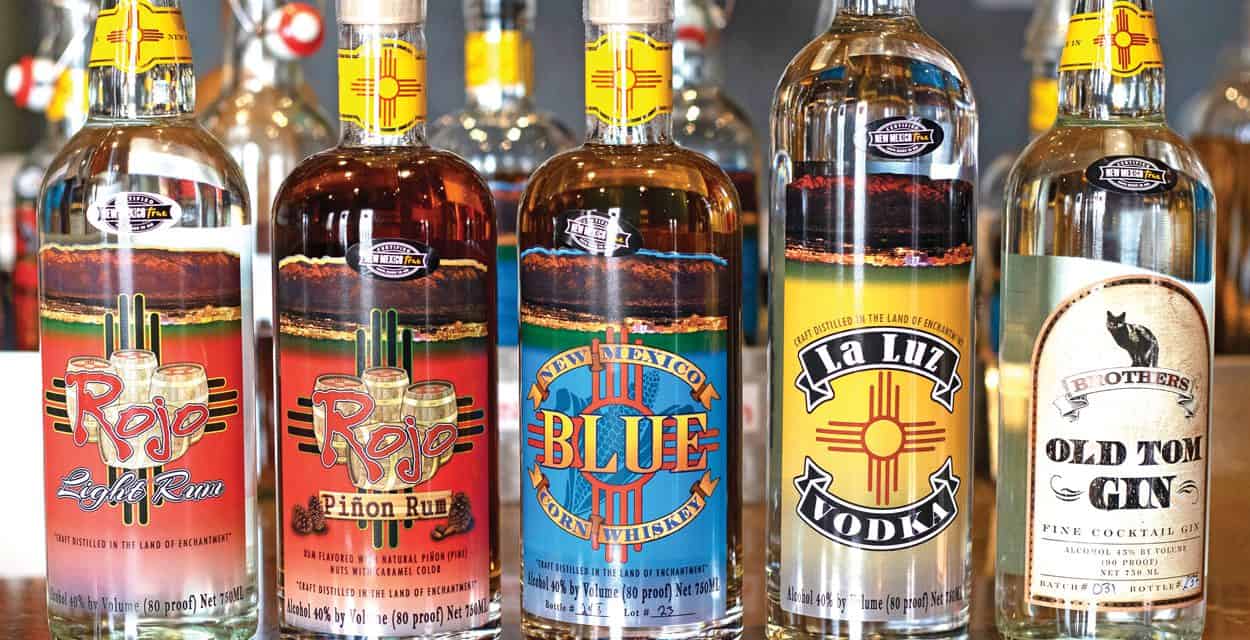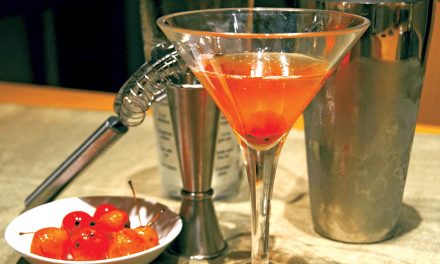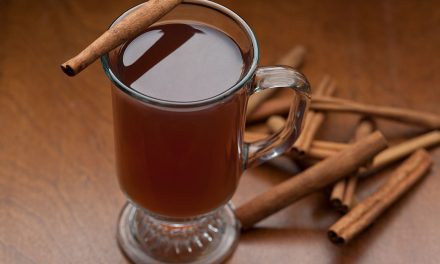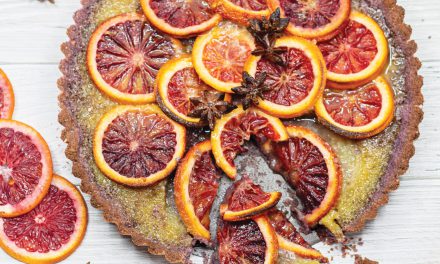By Michael J. Dax · Photos by Stephanie Cameron

Left Turn Distilling spirits from left to right: Rojo Light Rum, Rojo Piñon Rum, New Mexico Blue Corn Whiskey, La Luz Vodka, and Old Tom Gin.
Over the past decade, whiskey has boomed. For a spirit whose marketers and advertisers tell a story that capitalizes on notions of heritage and history, it may seem that whiskey has always been here. And it has, but spirits, like nearly everything else, go in and out of style. While whiskey was ubiquitous throughout the 1930s, 1940s, and 1950s, it then entered the proverbial wilderness, only to reemerge in recent decades. This current boom has seen old fashioneds and manhattans take over cocktail menus across the country, and New Mexico is no exception.
However, not all whiskey is created equal. To say nothing of Scotch whisky or Irish whiskey—note the different spellings—American whiskeys vary widely in styles, ingredients, and flavor. Although dominant trends have prized smoothness over character, Brian Langwell, owner and operator of Left Turn Distilling—an unmatched, deep-cut Looney Tunes reference—continues to prioritize flavor above all else.
Langwell grew up in Albuquerque’s East Mountains, and when he was fifteen years old, he received a chemistry set for Christmas. Around the same time, he read a how-to guide of sorts about distilling, so he put the two together and borrowed some beer from his father to make what he describes as “beer schnapps.” Admittedly, it was horrible, but he was hooked.
In 2012, he wanted out of the business he had built for himself as a machinist, welder, and fabricator. He sold all of his equipment, but not before making the copper stills he continues to use today. Left Turn opened in 2013, occupying the same space as his machine shop in an industrial neighborhood of Albuquerque that has become a popular home for breweries in the last decade. Like most distillers, Langwell started with vodka and gin, but within a year started to make his signature blue corn whiskey.
When northern European colonists first came to North America, barley, wheat, and other grains used to make liquor and beer weren’t always accessible, so corn, a New World crop, quickly became the grain of choice. Even immediately following the American Revolution, corn whiskey remained a preferred spirit of Americans on the frontiers of Pennsylvania and the Ohio River Valley.

Since then, bourbon, which is aged in oak and made up of at least 51 percent corn with no restrictions on the remainder of the grain bill, has become a preferred whiskey. Rye, which requires at least 51 percent rye grain, has become increasingly popular as well, but corn whiskey, especially good corn whiskey, has become a rarity. As Langwell describes it, most corn whiskeys “just taste like alcohol and don’t have a lot of grain character to them,” he says. “When you taste corn whiskey, you should taste that corn in there.”
Left Turn’s New Mexico Blue Corn Whiskey, which is made entirely using New Mexico–grown blue corn, provides an additional local twist. Compared to yellow or white corn, blue corn has more of a nutty flavor, says Langwell. “It also has more protein, so it has a full body, if you will,” he continues. “It has kind of a bite to it, so it has a lot more character.” Left Turn works with Southwest Heritage Mill in Albuquerque, which grinds and roasts the corn, adding the buttery popcorn flavor that Langwell notes with pride.
In addition to the 100 percent blue corn whiskey, Left Turn makes Old Santa Fe Trail Straight Bourbon Whiskey. Using 70 percent blue corn and 30 percent rye and aging it for two years (hence the “straight”), it’s much spicier than most other bourbons, in part due to the rye. “Wheat is a softer kind of a grain and you don’t get a lot of character with it,” says Langwell. “Rye has its own unique spicy flavor.” In addition, the bourbon is bottled at a higher proof, which Langwell says helps bring out the flavor of the rye, including notes of chocolate.
The distillery’s original location off Candelaria and their forthcoming taproom in Old Town, which will occupy the Candy Lady building and is slated to open in March, both serve numerous high-end cocktails. For both of Left Turn’s whiskey spirits, Langwell recommends either a manhattan or an old fashioned, varieties of which change with the season. “The blue corn whiskey works amazingly in an old fashioned,” he says. “When you add some bitters and a little sugar, it brings out that corn note.” For a simpler approach, Langwell says you can’t go wrong with bourbon and an ice cube.
As much as the grain bill dictates flavor, Langwell emphasizes that the distilling process is perhaps even more important. While distilling, Langwell and head distiller, Chris Medina, make frequent cuts, a term that refers to the process of siphoning off liquid into separate batches during the distilling process. Compared to a lot of bigger distillers, Langwell makes many more cuts, meaning a less efficient, more expensive process, but one that is precise and discerning, leading to a more refined flavor.
It’s this attention to detail that he hopes to bring to future spirits. Due to the pandemic, production has been cut, but Langwell plans to make a 100 percent rye whiskey, sourced from Colorado’s San Luis Valley, as soon as he is able. He also hopes to make a wheat whiskey using New Mexico–grown wheat, but is still looking for a source.
In the meantime, Langwell’s passion hasn’t waned a bit. Pre-COVID, he would lead ten to fifteen distillery tours a week, and as soon as he is able, he’ll be back to sharing the passion and knowledge that has driven him forward since that first batch of schnapps.
2926 Girard NE, Albuquerque, 505-508-0508, leftturndistilling.com
Edible celebrates New Mexico's food culture, season by season. We believe that knowing where our food comes from is a powerful thing. With our high-quality, aesthetically pleasing and informative publication, we inspire readers to support and celebrate the growers, producers, chefs, beverage and food artisans, and other food professionals in our community.












